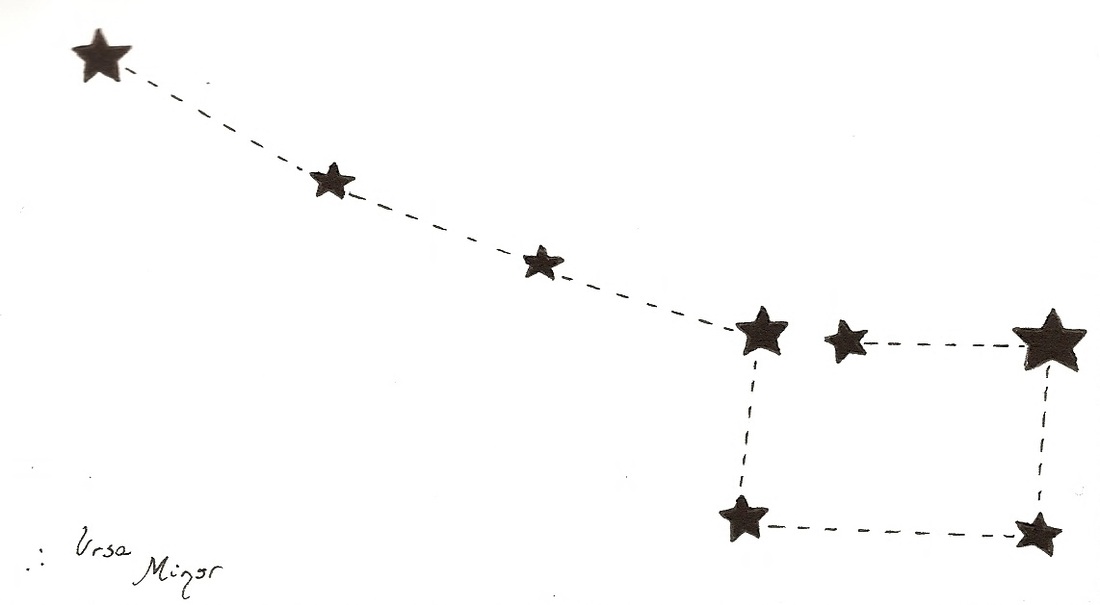The Ursa Minor constellation, also called Little Dipper, is commonly visualized as a baby bear with an unusually long tail. As I said yesterday, Ursa Minor and Ursa Major were related by the Greeks to the myth of Callisto and Arcas (who was Callisto's daughter with Zeus). However, in a variant of the story, in which it is Boötes that represents Arcas, Ursa Minor represents a dog. This is the older tradition, which could explain both the length of the tail and the obsolete alternate name of Cynosura (the dog's tail) for Polaris, the North Star.
Previously, Ursa Minor was considered just seven close stars, mythologically regarded as sisters. In early Greek mythology, the seven stars of the Little Dipper were the Hesperides, daughters of Atlas. Together with the nearby constellations of Boötes, Ursa Major, and Draco, it may have formed the origin of the myth of the apples of the Hesperides, which forms part of the Labours of Hercules. Ursa Minor with its modern associations was invented by Thales of Miletus in approximately 600 BCE, from what had previously represented the wings of Draco, the Dragon. He did so out of a desire to commemorate the location of the North Celestial Pole, then near Beta and Gamma Ursae Minoris.
In Hungarian mythology, though, the constellation is called 'Little Goncol cart' (Göncöl szekér) after a legendary shaman (Ursa Major is 'Big Goncol cart'). The shaman's knowledge knew no limit. He invented the cart: his nation was wandering, so the cart was the biggest gift of the Gods to the country. Legends claim he knew everything about the world. Nobody saw his death; his body simply disappeared among the stars.
Previously, Ursa Minor was considered just seven close stars, mythologically regarded as sisters. In early Greek mythology, the seven stars of the Little Dipper were the Hesperides, daughters of Atlas. Together with the nearby constellations of Boötes, Ursa Major, and Draco, it may have formed the origin of the myth of the apples of the Hesperides, which forms part of the Labours of Hercules. Ursa Minor with its modern associations was invented by Thales of Miletus in approximately 600 BCE, from what had previously represented the wings of Draco, the Dragon. He did so out of a desire to commemorate the location of the North Celestial Pole, then near Beta and Gamma Ursae Minoris.
In Hungarian mythology, though, the constellation is called 'Little Goncol cart' (Göncöl szekér) after a legendary shaman (Ursa Major is 'Big Goncol cart'). The shaman's knowledge knew no limit. He invented the cart: his nation was wandering, so the cart was the biggest gift of the Gods to the country. Legends claim he knew everything about the world. Nobody saw his death; his body simply disappeared among the stars.
~Ally

 RSS Feed
RSS Feed